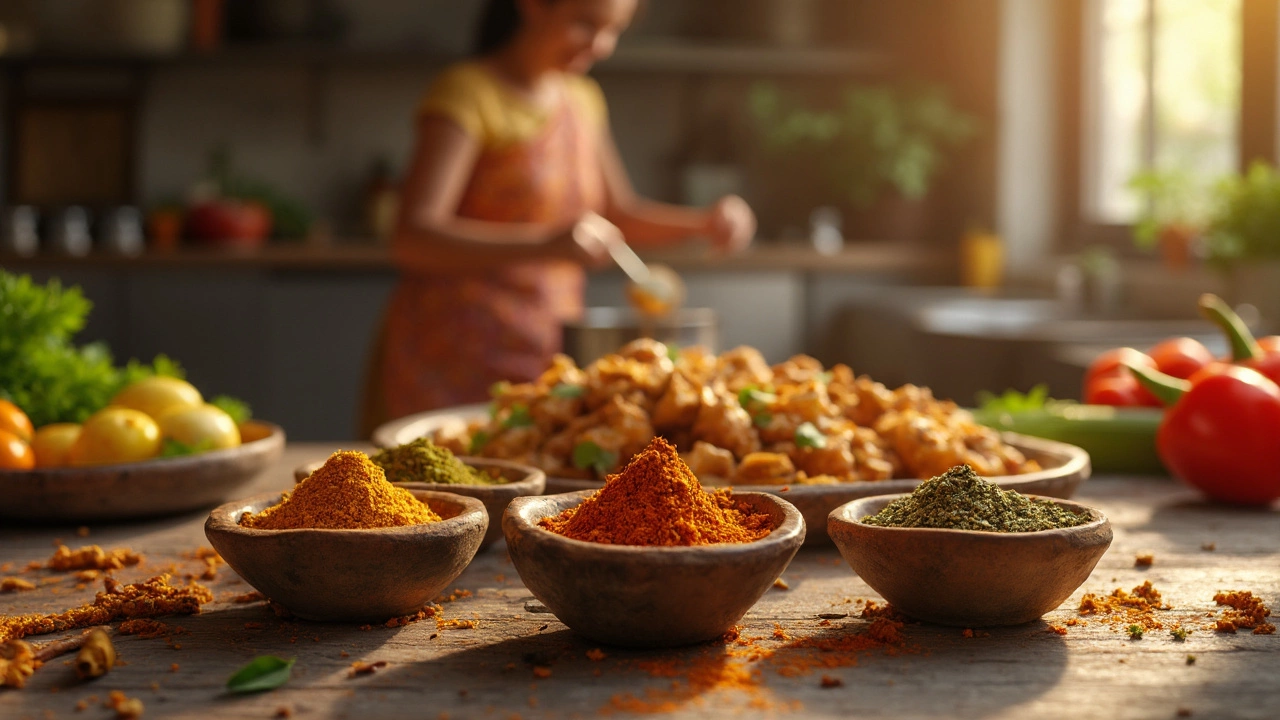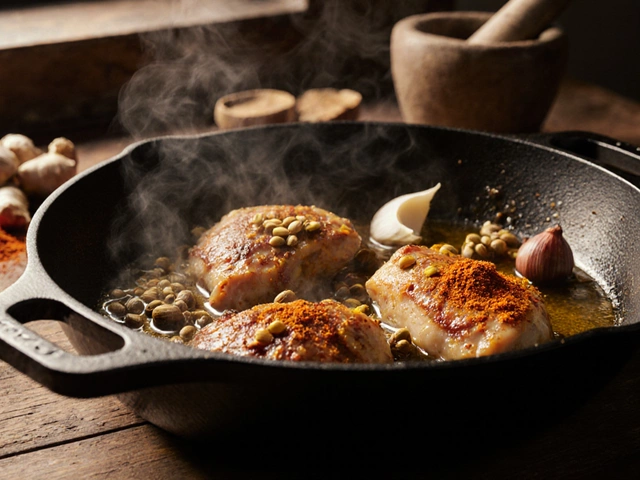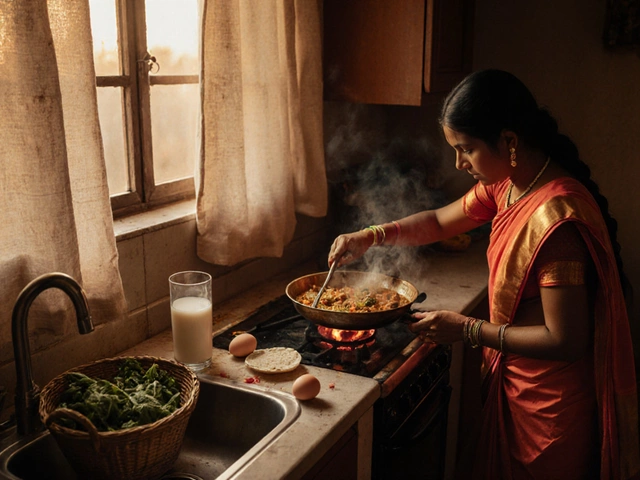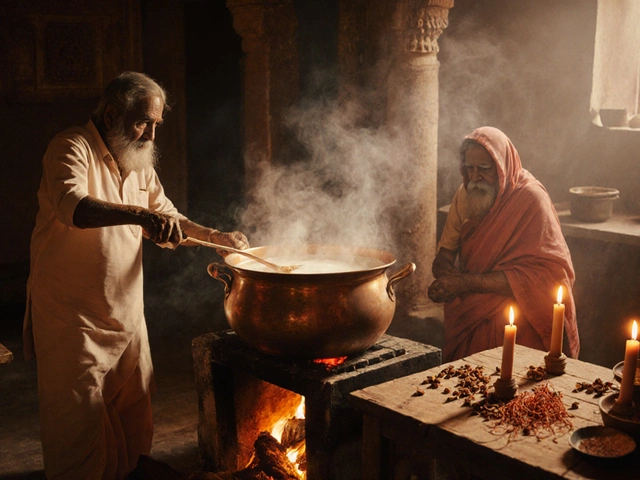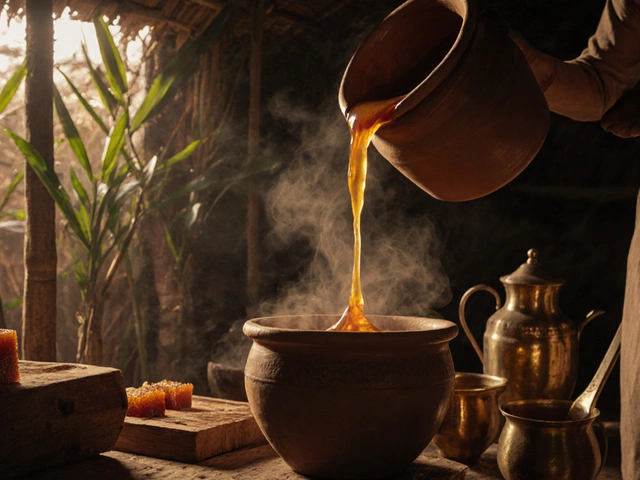Want to make real chicken curry that packs a punch? It all starts with the right spices. Every kitchen’s got their own secret blend, but when you peel it all back, there are just four spices you absolutely can’t skip. Without these, curry just isn’t curry.
These spices don’t just give color—they bring the aroma, the warmth, and that layered flavor you can’t fake with just salt and pepper. Mess one up, and you’ll still end up with dinner, but it won’t be that unforgettable, crave-worthy curry you’re after.
I still remember my first try at curry with Max (my dog) begging at my feet. The smell alone was enough to distract even him from his usual mission of chasing squirrels. So, stick with me and you’ll see how easy it is to nail these spices and boost your chicken curry game—no fancy culinary school required.
If you’ve ever opened a jar of store-bought curry powder, what you’re actually smelling is a combo of these big four. Ready to get into the heart of curry magic? Let’s get those basics down so you can cook curry that people remember.
- Why Spices Matter in Curry
- The Big Four: Core Curry Spices
- Choosing and Using Curry Spices
- Tips for Perfect Chicken Curry Flavor
Why Spices Matter in Curry
A good chicken curry is all about the spices. Seriously, they're the main reason curry tastes so different from your regular chicken stew or soup. Without the right curry spices, you'll just have bland chicken and sauce—and that's not what anyone wants.
The four main spices are the building blocks for both flavor and color. They're what give a sunshine yellow look, a touch of heat, and that hard-to-describe warmth that spreads through your kitchen and makes people suddenly super interested in what's cooking. The best part? These spices do more than just taste good. Some actually help with digestion, which comes in handy when you're stuffing in that extra bite of chicken curry, rice, and naan.
- Curry spices like turmeric and cumin give that deep, earthy vibe while chili packs the heat and coriander keeps things fresh, almost lemony.
- Different combos of these core spices create endless varieties of curry, depending on the region and what you have in the cupboard.
Here's the funny thing: most restaurant curries use the same four spices as homemade ones. It's not about how exotic the ingredients are. It's about getting the basics right and knowing how to balance them. Mess up the quantities and you'll overpower or underwhelm everything else.
You might not realize, but a study on home cooks (done by a UK food magazine in 2023) found that people ranked a dish as 40% more "delicious" just by nailing the right balance of curry spices, even when the rest of the recipe was super simple.
The takeaway? Don’t ignore the importance of chicken curry spices. They decide whether your meal is forgettable or something that gets requested again next week. Get these spices right—your kitchen will never be boring again.
The Big Four: Core Curry Spices
If you peek into the world of curry spices, you’ll keep running into the same four: turmeric, cumin, coriander, and chili powder. These are the backbone of almost every classic chicken curry out there. Sure, different regions might throw in extras, but if you want curry to taste like curry, start here.
- Turmeric: This is where the golden color comes from. It’s a root, kind of like ginger, and it’s loaded with earthy, peppery flavor. Turmeric helps give chicken curry that deep, mellow base that ties everything together. Plus, it stains everything, so watch out for your countertops—and your T-shirts.
- Cumin: Ever smelled ground cumin before? It’s smoky, nutty, and gives your curry that warm, punchy kick. In a lot of Indian homes, cumin goes right into the hot oil or ghee at the very start, letting out its full aroma before anything else.
- Coriander: This one’s a bit citrusy, a touch sweet, and blends with the cumin to balance the whole dish. Ground coriander has a lighter color and isn’t as in-your-face as some other spices, but without it, you’ll notice your curry just feels flat.
- Chili Powder: Here’s where the heat comes from. But not all chili powders are made equal! Indian chili powder is pretty fiery, while others (like the ones for Tex-Mex) are milder. Start with less—you can always add more once you taste.
Here’s something cool: the blend of these four essential spices does more than just flavor food. Turmeric has curcumin, which has anti-inflammatory perks, and cumin is known to help with digestion. No wonder curry has survived for centuries.
| Spice | Main Flavor | Common Amount (per 4 servings) |
|---|---|---|
| Turmeric | Earthy, warm | 1 tsp |
| Cumin | Smoky, nutty | 1.5 tsp |
| Coriander | Citrusy, sweet | 2 tsp |
| Chili Powder | Hot, spicy | 0.5 - 1 tsp |
If you’re mixing your own curry powder at home to make your next chicken curry, keep these ratios in mind. Taste as you go, and tweak based on what you like best. That’s really the fun part—you’re in the driver’s seat.

Choosing and Using Curry Spices
If you want that big, bold curry spices flavor every time, start by picking fresh, high-quality spices. Old spices lose their punch. Seriously, if your turmeric or cumin has been hiding in the back of the cupboard for a year or two, you’ll taste the difference. The aroma should hit you as soon as you open the jar.
The main four you need for an authentic chicken curry are cumin, coriander, turmeric, and chili powder. Each plays a unique role:
- Cumin: Gives a warm, earthy base. Buy it as whole seeds for toasting, or ground for convenience. Taste-test it raw and toasted to see how the flavor changes.
- Coriander: A little citrusy and sweet, it balances out the other spices. Ground coriander is the usual pick, but freshly ground seeds bring a brighter flavor.
- Turmeric: That golden color and subtle bitterness? It’s all turmeric. Don’t overdo it—too much can make things taste chalky.
- Chili Powder: This controls the heat. There’s a world of difference between Kashmiri chili (mild, red color) and cayenne (hot, sharp). Adjust for your heat tolerance.
When using these in a curry recipe, don’t just toss them in cold. The magic happens when you "bloom" your spices in oil before adding anything else. This pulls out oils and intensifies the aroma. One minute with medium heat and you’ll see (and smell) why real cooks never skip this step. Watch out though—burning the spices makes them bitter fast.
If you’re not sure on amounts, a typical starting point for a family-size curry is 1 teaspoon each cumin and coriander, ½ teaspoon turmeric, and chili powder to taste. Taste as you go; some like it fiery, some prefer milder. Once you get confident, adjust the mix to your liking and even try grinding whole spices with a coffee grinder for next-level freshness. Max never cares about the heat, but my kitchen always smells incredible when I go the whole spice route.
| Spice | Best Form | Use in Curry |
|---|---|---|
| Cumin | Whole (toasted), Ground | Base flavor, earthy kick |
| Coriander | Ground or Freshly ground seeds | Mild citrus lift |
| Turmeric | Ground | Color, subtle bitter note |
| Chili Powder | Ground (choose heat level) | Heat and color |
Tips for Perfect Chicken Curry Flavor
If you want your chicken curry to taste amazing every single time, you need to do more than just throw the main spices in a pot. It's all about how you handle those spices and the other simple tweaks you make. Here are the useful tips nobody tells you, but every home cook should know.
- Toast Your Spices First: Heating your curry spices in a dry pan wakes up their oils and flavors. This is what gives your curry that rich, deep taste. Don’t skip it—even just 30-60 seconds over medium heat works wonders.
- Fresh is Best: Spices lose their punch the longer they sit in your cupboard. If your spices are more than a year old, they’ve probably lost most of what makes them special. Replace them regularly to keep your curry flavors bold.
- Build the Curry in Layers: Add your onions, garlic, and ginger before the spices. Let them cook down and soften, then stir in your big four curry spices. This way, nothing burns and each ingredient has its moment.
- Don't Rush the Simmer: Chicken curry gets better when it cooks low and slow. Let your curry gently simmer so all those spice flavors blend perfectly with the chicken.
- Balance Heat and Sweetness: If your curry tastes too strong or bitter, don’t panic. Add a splash of coconut milk, a pinch of sugar, or a dash of yogurt to mellow things out. This trick saves bland or sharp curries all the time.
- Salt Matters: Salt isn’t just an afterthought. It actually unlocks the flavors of the essential spices. Taste near the end and add a little more if you think it needs it—not before.
Here’s a handy table if you’re mixing up your own curry blend at home. This shows the usual ratio for each of the four main spices in a classic chicken curry recipe:
| Spice | Standard Ratio | Tip |
|---|---|---|
| Turmeric | 1 part | Gives bold yellow color, mild earthy taste |
| Coriander | 2 parts | Adds citrusy notes, freshens up heavy flavors |
| Cumin | 2 parts | Warm, nutty richness |
| Chili Powder | To taste | Brings the heat, adjust for your spice level |
One last pro tip: Store your curry powder or mix in a cool, dark place. Light and heat kill flavor fast, and your next batch of curry won’t have any spark left.
